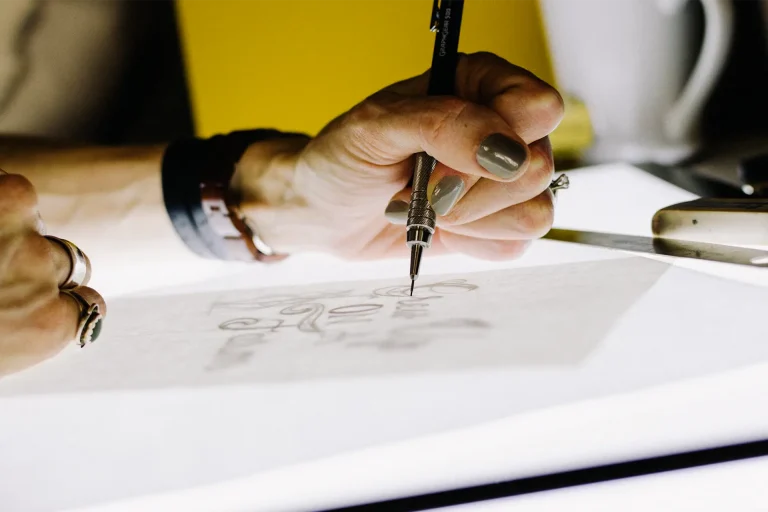Having an organized workspace is one goal you’ll always be chasing. It’s human nature to start off with a plan and then watch your carefully designed system turn to chaos as more tasks pile up on your desk.
Fortunately, you can reorder your work environment to get rid of distractions and clear the way for productivity. The end of summer is the perfect time to refresh your space for fall.
Whether you’re starting school or just upping your business game, create a workspace that keeps you on track to achieve your goals.
Remove Procrastination Triggers
How often do you look at someone who’s very disciplined and wish you could be as focused as they are? Trying to mimic others will only get you so far because everyone has unique triggers. What’s calming to some is distracting to others, and vice versa.
It’s more helpful to look at your own patterns and figure out which habits lead to your best work. Maybe, having a laptop around when you aren’t using it sucks you into a vortex of neverending YouTube videos. Or, you might keep interrupting your workflow to check your inbox.
Pay attention to behaviors that lead to procrastination, and remove common triggers from your work environment. Is your smartphone your kryptonite?
Put it away while you focus on other tasks. Do you waste time tidying up your workplace every morning?
Organize your desk at the end of the day, so you can dive into your first project without delay. Does music put you in the zone? Fill your iPod with soothing tunes.
Replace procrastination triggers with a positive routine that reinforces good habits. Over time, it will become easier to slip into a work mindset and follow through on everything you start.
Wrangle Your Electronics Cables
Now that technology reigns in the office, your cord situation can get out of hand. Having a cluster of tangled cables is an electrical hazard and a danger to your guests.
The last thing you want to do is trip over stray cables or damage your electronics ports when cords are accidentally yanked out.
Use the built-in cord management features included in many desks and storage furnishings. You can also buy cord clamps, sleeves, or holders to safely redirect cables around your furniture and conceal them in out-of-the-way areas.
Digitize Old Files
Instead of letting your scanner collect dust, start converting old documents to digital formats. By storing records in the cloud, you can print them out whenever you need a copy.
Feel free to toss paperwork when keeping an original isn’t required, as it frees up space in file cabinets. Putting documents in a central location also means you’ll always know where to look for them.
For paperwork that you need to keep, make sure that it is organized properly. If you can’t afford an elaborate filing system, use branded folders that you have laying around from other promotions.
Purge Everything You Don’t Need
Learn to let go of nonessential items that eat up valuable space. As a busy professional, you tend to collect lots of paperwork, promotional products, and knick-knacks that fill every spare corner of your drawers and desktop.
Try to overcome your inner hoarder, and set aside time for a massive purge-a-thon. It helps to use “Keep” and “Toss” boxes, so you don’t lose track of items while sorting.
Ask yourself, “Do I really need this? How often do I use it?” Then, shred old documents, get rid of newly emptied folders, and trash used-up office supplies.
If you have a backlog of old magazines, recycle them or donate them to libraries, shelters, and nursing homes.
Disinfect Major Areas
Since you’re already in cleaning mode, why not deal with the colony of bacteria taking a vacation on every surface?
In a recent UK study, Printerland found that the average office desktop contains as much as 20,961 germs per square inch. At 25,127 and 21,000 germs per square inch, respectively, your desk phone and chair are even bigger germ magnets. Yikes!
From handshakes to sharing electronics, your everyday routine exposes you to a host of bacteria in business and school settings. Other common culprits include your keyboard, mouse, and coffee mug.
Do yourself a big favor, and go on a disinfecting spree. Wipe down your electronics, seating, desktop, and the insides of drawers and cabinets. Be sure to disinfect any desk storage supplies as well. You (and your visitors) frequently make hand contact with items like pen and business card holders.
Make Use of Vertical Space
Before you start repopulating your desk, think about how you can use wall space to free up room in your immediate work area. Having important materials accessible in a well-thought-out way can also help you improve productivity.
For example, do you check reference sheets several times a day? Display them on a bulletin board or cubicle wall close to your desk, where you can easily look up without stopping your work. With a pegboard, you can mount a variety of storage containers to manage everything from clipboards to writing utensils.
Use sites like Pinterest for tips on how to create a pegboard organizer. Just be sure to maintain a clean, orderly format that looks professional to visitors. Stick with a simple color scheme, and print personal documents on custom business stationery to keep everything uniform.
Choose Versatile Desktop Storage
One goal of cleaning is to create more room on the work surface you use most. With that in mind, pick compact storage containers that make supplies accessible without crowding your work area.
Keep your desktop accessories to a bare minimum by focusing on which materials you use every day. Common examples include:
- Inbox/outbox trays
- Upright file holder
- Mouse pad
- Computer monitor/laptop
- Desk phone
- Business card holder
When you spend most of your time writing by hand, you might not need electronics on your desk at all. But if you do have a computer monitor, consider placing it on a stand to raise the screen to eye level.
That way, you can also use the space under the riser to store your keyboard or other supplies when you aren’t using your computer.
Put Everything Else in Drawers
Once you decide which items to keep, put all your secondary supplies in drawers or on shelves. Work from top to bottom when possible, storing the supplies you use most in the upper drawers.
A desk drawer organizer is great for sorting small office supplies, such as markers, Post-It notes, and paper clips. Your items are still within arm’s reach, so you’ll have no trouble grabbing a promotional pen or magnet to offer to clients after a meeting.
Don’t have built-in desk drawers or wall shelves? No problem. Invest in a small cabinet or plastic storage drawer unit you can place beside or beneath your desk. You can also stack decorative storage boxes in a corner for a neat, versatile solution.
Limit Personal Decor
Resist the urge to overload your desk with photos or promotional products you picked up from the latest trade show. Not only is it hard to work amid the clutter, but a messy desk is off-putting to clients. Limit personal decor to one or two items, especially if you have a narrow desk.
Organize your desk and surrounding environment from time to time to ensure you’re working as efficiently as possible. An orderly office also sends the right message to customers — you value their business and care about making a good impression.
When you’re finished tidying up, look for simple ways to reinforce your brand to anyone who visits. Custom office supplies are a beneficial tool for spreading brand awareness without adding unnecessary clutter to your workspace.







